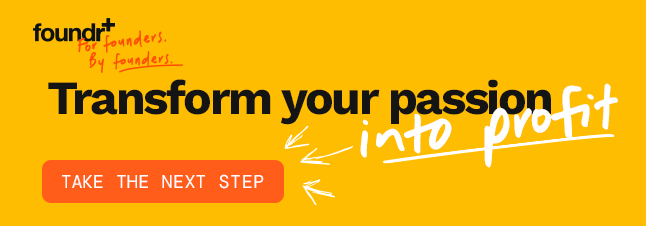The importance of teamwork in 2025 cannot be understated.
And that’s not just extroverted opinions bleeding into reality—that’s a data-backed fact. Once you understand the benefits of teamwork, you’ll be racing to build a dream team rather than trying to clone yourself or magically extend the hours in a day.
I’m not talking about high school group projects here—that’s a whole different kind of teamwork. I’m talking about willing collaboration between professionals.
Ready to see what teamwork can do for you and your startup? Let’s dive straight into the research.
Table of Contents
5 Data-Backed Benefits of Teamwork
How to Upgrade Teamwork at Your Business
Real-Life Examples of Teamwork in Action
5 Data-Backed Benefits of Teamwork
1. Boost creativity and performance
Diversity and inclusion aren’t just modern-day buzzwords for hiring teams—they really impact your bottom line. McKinsey proved it, too.
McKinsey found that teams with more diverse backgrounds (ethnicity, age, gender, etc.) have 35% improved creativity and performance. Diverse individuals bring different experiences and perspectives to the table, giving you a more holistic view of a problem or situation rather than a single viewpoint.
While working with individuals like yourself might sound more comfortable, it won’t help your career or business. Step outside your comfort zone, surround yourself with diverse teammates, and watch your performance take off.
2. Reduce burnout
Burnout is a formally recognized occupational health issue—a.k.a., it’s real. And it’s getting worse.
More than 50% of employees report feeling burned out, and 67% believe it’s only gotten worse in recent years. Burnout isn’t an inevitable aspect of having a job, though. You can do something about it.
Improved teamwork can better distribute work and share the load. When managers and workers have frequent, transparent conversations, they can nip burnout in the bud before it begins to affect health, performance, and results.
Most of the time, you can prevent burnout by just setting clear and simple goals. Think about the impending Friday and how much you have to get done between now and then. Now, imagine a coworker who’s ahead on assignments and offers to help—suddenly, getting everything finished before the weekend doesn’t sound so impossible.
3. Improve employee morale
Morale and performance go hand in hand. If you want to improve productivity, look at morale first.
“Engaged employees deliver improved organizational and individual performance,” says Schrita Osborne and Mohamad Hammoud, researchers at Walden University. “The bond between leaders and employees is an essential element for engaging employees, which in turn increase[s] organizational profitability”.
Unfortunately, poor teamwork punches employee morale in the face. Employees and executives cite poor communication as the reason for workplace failures. Go figure.
“Fortunately, morale problems can often be addressed relatively easily,” says Max Messmer, chairman of Accountemps and author of Human Resources Kit For Dummies. “Improving workplace communication is one of the most effective—and one of the least costly—ways to combat the problem of a disengaged workforce.”
4. Bump up your bottom line
Teamwork isn’t just a nice-to-have attribute to throw on your website’s career page—it has a real impact on your bottom line. A survey conducted by The Economist Intelligence Unit found that poor teamwork can lead to lost sales valued between $100,000 and $999,999.
That’s a lot of money.
Here’s how survey respondents reported communication breakdowns affected the workplace:
- Increased levels of stress (52%)
- Delay or failure to complete projects (44%)
- Low company morale (31%)
- Missed performance goals (25%)
- Lost sales (18%)
Now, this is all about looking at things from a perspective of consequences. Turn it upside down to see the opportunity.
Improve your teamwork and communication to see decreased stress levels, more on-time project completion, higher company morale, improved performance goals, and more won sales. Not a bad investment, right?
“Our study with the Economist Intelligence Unit confirms that communication breakdowns have a profound impact on everyone in the organization, regardless of gender, generation, or seniority within the company,” says Nathan Rawlins, chief marketing officer at Lucidchart. “By understanding the causes and impact of poor communications, business leaders can focus on creating strategies for building inclusion and cognitive diversity in the workplace”.
5. Retain more employees
There’s nothing quite like poor teamwork to make employees jump ship. This could be because of miscommunication, burnout, stress, or plenty of the other reasons we’ve already cited—but unengaged employees don’t stick around for long.
Turnover isn’t cheap, either. Experts estimate the cost of losing an employee to be 1.5 – 2.0x the worker’s annual salary. Hiring, onboarding, training, and ramping up are expensive costs to replace, and that doesn’t even take into account the impact churn has on other employees (reduced engagement, higher burnout, greater errors).
“We have to remember that people are what we call an ‘appreciating asset,'” says Josh Bersin of Deloitte.
“The longer we stay with an organization the more productive we get —we learn the systems, we learn the products, and we learn how to work together…In the right environment (onboarding, coaching, training, teamwork) we rapidly ‘find our place’ and start to add more and more value.”
International Data Corporation (IDC) predicts that businesses that foster collaborative work environments can expect to see:
- 30% lower staff turnover
- 30% higher productivity
- 30% higher revenue per employee
You could get out a calculator and do the nitty-gritty calculations of figuring out exactly how much turnover costs your business—or you could just take the experts’ word for it and do everything you can to retain employees.
How to Upgrade Teamwork at Your Business (and in Your Life)
Teamwork doesn’t mean more meetings (please, no). It also doesn’t always involve more “team-building” activities, despite the name. Here are a few ways you can upgrade teamwork at your business:
1. Clarify roles
While the whole is greater than the sum of its parts, strong teams are built of strong individuals. However, it’s not so much the strengths as the awareness of the strengths that impact success.
“When predicting both engagement and performance, a team’s awareness of their strengths is more important than the specific composition of those strengths”.
Each team member needs to know how they contribute (and how they don’t). This isn’t to silo employees—it’s to help everyone do their job, specialize, avoid overstepping boundaries, and reduce duplicative work.
Clarifying roles also helps your employees focus on their strengths. Let your employees use their strengths every day, and they’ll be 6x more likely to be engaged in their work and 3x to report a higher quality of life. Teams that focus on their strengths (every day) have 12.5% higher productivity.
And it all starts with the leaders. Teamwork doesn’t often bloom from your employees—it funnels down from the top.
“It is really amazing how much an organization sucks up the behaviors of the leader,” says Nick Tolley, CEO, and founder of Harris + Hoole. “I didn’t quite appreciate this until I started this business. You can very easily see this when you are having a bit of a crap day, and you are a little bit downbeat. It is infectious. Very, very infectious. It not only affects your team, it also affects the customer experience.”
Managers often make the mistake of trying to improve their employees’ weaknesses. ‘Tis a noble task, but it’s not doing anyone any favors. Managers who focus on weaknesses lead to teams that are 26% less likely to be engaged.
While it’s important to progress and grow, that doesn’t mean you need to fix all your shortcomings—it might mean you just need to bolster your potencies further.
2. Communicate every day
Not because you have to.
Because you want to.
Ideally, communication between teammates should look more like an ongoing conversation rather than a one-off exchange. It should include information sharing, huddles, informal meetings, catch-ups, group discussions, and 1:1 chats.
You’re not confined to a specific medium, either. Communication doesn’t have to be team meetings. It can be as simple as a Slack message. With all the options available to you and your team, don’t limit yourself to “traditional” methods. Use all the channels at your disposal:
- Livestreams
- Video calls
- Slack
- Text
- Face-to-face
- Houseparty
3. Celebrate together
Teams do plenty of goal-setting, planning, and executing, but they don’t do nearly enough celebrating. Take time (and not just after-hours work time) to toast to your victories, praise contributions, and observe your results.
Now, don’t make this a Dundies—we know how that ends. Instead, focus on the real achievements of each individual and how their contributions added to the overall good of the team.
Celebrating goes beyond lip service, too. Think of ways you can reward your team:
- Company outings
- Promotions
- Bonuses
- Extra vacation days
- Prime parking spots
- Company-wide recognition
- Physical awards (trophies, medals, memorabilia, swag)
People want to feel recognized for the hard work they do. It encourages them to continue performing, and it also improves engagement.
Real-Life Examples of Teamwork in Action
A tactical adjustment – HiSmile
Nik Mirkovic and Alex Tomic, founders of the highly successful brand HiSmile, realized they needed to develop a new state-of-the-art R&D team, something they had little experience with.
They interviewed the best and brightest oral care researchers across the globe, including people with experience at product conglomerates like Unilever and Colgate. But no candidates fit the Hismile way.
“Character over everything. Everything,” Mirkovic says. “Because every time myself and [Tomic] didn’t know a thing about R&D, didn’t know a thing about business, didn’t know a thing about anything, it came down to what we believe is character and competencies and then just being willing to pick up things and […] work with other people to make things happen.”
“Character over everything. Everything.”
The willingness to pursue an idea comes from the top down and bottom up at Hismile. Since Hismile shifted its strategy, the business has elevated leaders from all sectors:
- The head of product and procurement came through customer service.
- The head of supply played soccer with Mirkovic and started at Hismile in the warehouse.
- The general manager was working casually for Hismile as a copywriting consultant.
- The head of marketing used to be in sales at a software company.
“If you were to look at them when they started at Hismile and when they came in, I don’t think any other company would’ve given them the chance [to grow],” Mirkovic says.
In the past three years, Hismile transformed into a brand that couldn’t be copied. Now, they’re entering the major leagues of the oral care industry. And the competition is ruthless.
The founder scientific method – Illumix
“No one officially gave me my job, but I definitely fought for it,” Kirin Sinha says.
Five years after starting Ilumix, Sinha feels like being a founder only gets more difficult. She says that’s why your mentality as a founder is just as important as the product you’re delivering.
“If you don’t really know if you’re going to get there, I don’t think you will,” Sinha says.
At Illumix, Sinha balances consistent fundraising while leading a team toward a long-term vision. Since 2017, she’s fundraised through boom and bust markets and a pandemic, all while growing a small team into a business of 30-plus employees.
Sinha attributes Illumix’s growth to powerful storytelling.
“Everyone wants to have a purpose and something to fight for,” she says about building her team. “Most people join a startup because they want to win. They want to be a part of something impactful. They want to make progress.”
“Most people join a startup because they want to win. They want to be a part of something impactful. They want to make progress.”
For fundraising, Sinha’s story focuses on how Illumix can be a platform for investors’ ideas, not just hers.
“That is actually what real success looks like—when a business partner becomes so invested that they’re coming up with concepts versus you pitching something,” Sinha says. “That’s really when you know you have a successful meeting.”
In March of 2023, Illumix announced its Series A funding, reaching a total of $31 million raised, including a batch of new investors like Mark Cuban.
With the ever-changing future state of AR, Sinha knows she needs to be adaptable while remaining confident in her vision.
“It’s like [creating] your own scientific method on yourself to say, ‘Am I building the right thing? Am I doing this correctly? Has the data changed, and maybe I need to adjust what that vision is?’ So I think that’s always a challenging balance,” Sinha says.
She accomplishes this balance at Illumix by framing every goal within the business and fundraising conversations as a learning opportunity. That includes failures and “nos.”
“Sometimes it’s seeing the challenges and knowing that you survive and get through them that creates confidence,” Sinha says. “I actually think people are more excited to try to hit big goals than little, incremental goals.”
Frequently Asked Questions About Teamwork
How can conflicts be resolved within a team?
Just like every team is unique, so too is every team conflict. So first, ask your team to find a resolution amongst themselves. Empowering your people to solve internal issues will renew confidence in the group and build stronger connections for the future. If they still can't resolve it, step in and decide an outcome that is best for the individuals and the team. Remember to inform HR of conflicts involving race, sexual orientation, religious beliefs, abuse, or other employee-protected rights.
How do you motivate and inspire teamwork in the workplace?
As a leader, it's up to you to listen and understand what is necessary to equip and build unity amongst your team. While there's no exact formula, start with sharing the purpose of your team/business, outlining goals for the team, clarifying roles amongst the group, communicating every day, and celebrating big and small wins.
How can leaders promote a culture of teamwork within their organization?
Show and tell that you care about teamwork. Show by leading collaboratively amongst your peers and providing collaborative opportunities to every employee. Tell by making teamwork a core value and celebrating group successes over individuals.
Become a Better Team Player with a Little More Know-How
Your team doesn’t need to be made up of Jacks of all trades, masters of none. That’s a recipe for disaster.
However, your team could do with more well-rounded know-how.
While your copywriter doesn’t need to know the ins and outs of Facebook Ads, it could help them write more compelling advertisements. Your social media manager doesn’t need to know how to make YouTube videos, but knowing the end-to-end content marketing strategy could help them understand how they fit into the broader puzzle.
Regardless of what you need to learn, we have the resources to help.
Check our foundr+ for $1 to learn everything you (and your team) need to know to run like a well-oiled machine. Whether that’s optimizing your ecommerce store or creating better minimum viable products (MVP), there are courses, communities, and coaching to help you take the next step.
—
This article was updated with support from Grahame Whiles.


















